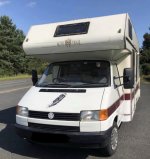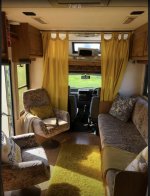Jinglyjangly
Full Member
- Messages
- 5
I’m doing up a 1993 vw t4 Autotrail Cherokee , inc replacing the entire electrical system.
I had planned on using an 20 amp dc to dc charger and 2 x 100 lithium batteries with 450 w solar and 2000w inverter.
However Black Friday and see Renology has 3000w inverters at a good price, what sort of input would I need into a 3000w inverter?
Could I run 12v ? Don’t think the old alternator which is around 65 amp output would handle any more than an 20 amp dc to dc charger?
I had planned on using an 20 amp dc to dc charger and 2 x 100 lithium batteries with 450 w solar and 2000w inverter.
However Black Friday and see Renology has 3000w inverters at a good price, what sort of input would I need into a 3000w inverter?
Could I run 12v ? Don’t think the old alternator which is around 65 amp output would handle any more than an 20 amp dc to dc charger?


